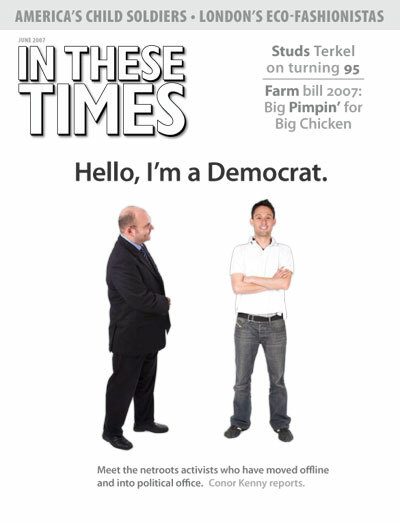The Legacy of Tailhook
Supporting our troops at any cost overshadows holding them accountable for sexual assault within military
Susan J. Douglas
It is the 15th anniversary of “The Year of the Woman,” as 1992 was billed. Spurred, in part, by their fury over how the all-male Senate Judiciary Committee treated Anita Hill during her testimony about Clarence Thomas being a crude sexual harasser, an unprecedented number of women ran for and won seats in Congress. Barbara Boxer, Diane Feinstein, Carol Moseley Braun and Patty Murray all won Senate seats; a year later, President Clinton appointed a record number of women to government positions, including Janet Reno as the first female attorney general.
Such achievement rarely comes without a backlash, and 1992 was no exception. For this spring and summer is also the 15th anniversary of the Tailhook scandal. The actual event – the drunken Tailhook Association convention in Las Vegas, in which naval aviators formed a gauntlet on the third floor of the Hilton and trapped women in it, pawing and molesting them, stripping off their clothes – took place in September of 1991, but the scandal exploded the following spring as the press and the Navy itself revealed a massive cover-up. The night of the event, Paula Coughlin, an admiral’s aide and helicopter pilot, filed a complaint with a top aide to Secretary of the Navy H. Lawrence Garrett and two inquiries began, one by the Naval Investigative Service and the other by the Naval Inspector General. More assaults came to light. Yet the Navy’s April 1992 whitewashed reports identified only two suspects from approximately 5,000 Tailhook attendees. As 26 women, 14 of them officers, claimed to have been assaulted, these findings defied credulity, and Garrett was compelled to widen the inquiry.
By June of 1992, Garrett faced a full-blown scandal about the cover-up, including the fact that 55 pages of interviews had been omitted from the final report, including one that placed Garrett himself at one of the Tailhook party suites. Garrett resigned at the end of June, shortly after Paula Coughlin appeared on ABC News to describe her and the other women’s ordeal. Garrett’s replacement ordered a service-wide “stand-down” so that every officer and enlisted person would take a full day’s training on sexual harassment. Such training became standard in the military, and sexual harassment hotlines were set up to field complaints and answer questions about policy. (The Tailhook Association’s response was to retain a PR firm, and in 1999 its ties to the Navy were reestablished, having been severed in the wake of the scandal.)
One argument that emerged after Tailhook was that men in the military would never respect women in the armed services or treat them as equals until women could serve in combat. In 1993, under the National Defense Authorization Act, Congress rescinded restrictions on women in combat and the Clinton administration opened 250,000 positions previously closed to women in the military.
Tailhook was a public event involving many women (and at least one teenage girl) at the same time. Such stories often have journalistic legs; when such incidents occur one by one, in private, they are deemed less newsworthy. But various reports indicate that women in the military today continue to endure widespread harassment and even sexual assault; it just happens in tents and outposts instead of the Las Vegas Hilton.
Sara Corbett, writing for the New York Times magazine in March, documented the trauma female soldiers face from the debilitating combination of post-traumatic stress disorder from the war and sexual harassment or assault. Corbett also noted the inculcation of the “why bother” attitude among the women: Why bother to report sexual harassment or assault, as such complaints are looked down upon and only a fraction of them result in punishment of the perpetrator. The women she interviewed also recounted the hostility they frequently confronted: Said one, “You’re one of three things in the military – a bitch, a whore or a dyke.”
Corbett’s subjects aren’t atypical. A survey conducted by the Veterans Association reported that 30 percent of female veterans had been victims of sexual assault, and 14 percent of those had been gang raped and another 20 percent raped more than once. Sexual assault remains underreported in the military, but estimates based on surveys like this place the rate at anywhere from three to 10 times that for female civilians.
So why wasn’t Corbett’s story more widely picked up by other news outlets? Are these stories we can’t bear to hear in our guilt over having sent troops to Iraq under false pretenses? As everyone competes to claim they “support our troops,” accounts of the criminal behavior of a subset of these troops are almost too taboo to raise. Yet the silence comes at the expense of these women – brave, tough, self-sacrificing. So we should remember Tailhook, what it did, and did not, change in the military. And it would be nice to have a real “Year of the Woman,” not just for senators and First Ladies, but for all women, especially those willing to die for our country.
Susan J. Douglas is a professor of communications at the University of Michigan and a senior editor at In These Times. She is the author of In Our Prime: How Older Women Are Reinventing the Road Ahead.









